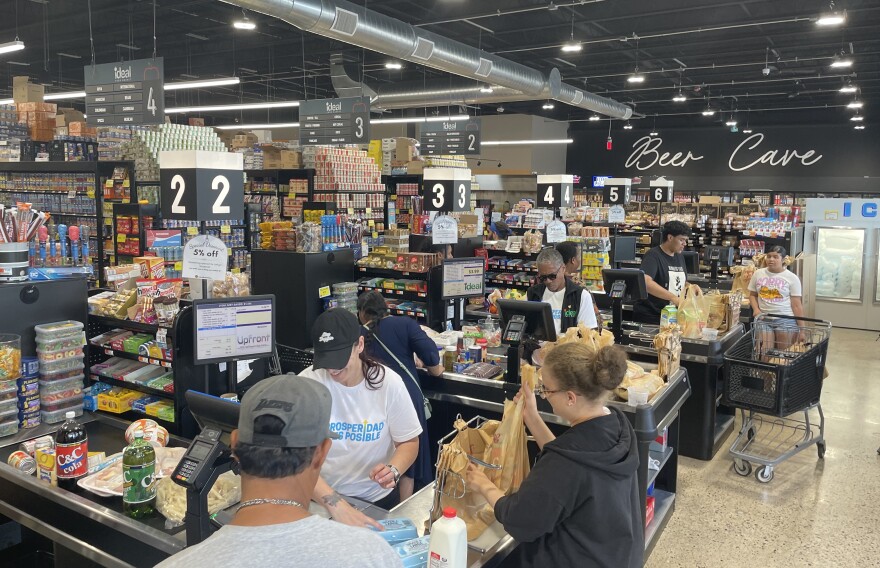WASHINGTON, D.C. - Nearly two million Pennsylvanians could see their food assistance disappear if the federal government shutdown continues.
The U.S. Department of Agriculture, which oversees the Supplemental Nutritional Assistance Program – known as SNAP or food stamps – sent letters on Oct. 10 to the state agencies that administer it.
The letters informed administrators not to send certain files to contractors that would clear the way for EBT cards to be loaded at the start of November.
It's possible that the government could find funding to keep the program going even if the shutdown continues, but at $8 billion a month, that would be a challenge
State officials say a pause in benefits would be a blow to families and the broader economy.
Gov. Josh Shapiro’s administration said more than $366 million in monthly SNAP payments will pause in Pennsylvania without the federal payments, according to a report by WITF in Harrisburg. The program benefits low-income families, seniors and children.
As the government shutdown drags on in its third week, a new AP-NORC poll finds that most Americans see it as a significant problem — and all of the major players are being blamed.
Roughly 6 in 10 Americans say President Donald Trump and Republicans in Congress have “a great deal” or “quite a bit” of responsibility for the shutdown, while 54% say the same about Democrats in Congress, according to the poll from The Associated Press-NORC Center for Public Affairs Research.
Benefits 1 in 8 people in U.S.
SNAP is a major piece of the nation's social safety net, touching nearly 1 in 8 people in the country each month. They receive benefits on prepaid cards that they can use for groceries.
The other big pieces of the safety net — Social Security and Medicaid — are expected to continue paying benefits during the shutdown.
But because of the way it's funded, SNAP is vulnerable.
In the accounting year that ended on Sept. 30, 2024, SNAP cost just over $100 billion, including the half of state administrative costs covered by federal taxpayers. It provided an average of $187 a month to 41.7 million people.
Warning to states
When the government shut down on Oct. 1 amid a congressional budget impasse, a few things were clear about SNAP.
One was that benefits would continue through October.
The other was that it was unclear after that.
The U.S. Department of Agriculture, which oversees the program, sent letters on Oct. 10 to the state agencies that administer it telling them not to send certain files to the contractors that would clear the way for the EBT cards to be loaded at the start of November.
Different states send that information at different points in the month.
Carolyn Vega, the associate director of policy analysis at Share Our Strength, an anti-poverty advocacy group, said that pausing sending the information now doesn't mean that cards can't be loaded next month, with or without resumption of government operations.
But it's not good news, either. “The question marks are trending in a bad direction for November,” she said.
Finding money a challenge
A budget agreement that ends the shutdown would also restore SNAP funding.
Short of that, Vega said, it's possible state or federal governments could free up money to bridge the gap. She said that ahead of a looming 2015 shutdown, similar warnings were released and then reversed even before Congress reached a deal to keep the government running.
But because of the amount of money involved, she noted, that's a challenge. General SNAP costs far more, for instance, than the Special Supplemental Nutritional Program for Women, Infants and Children that helps 6 million low-income mothers, young children and expectant parents to purchase nutritional staples. President Donald Trump's administration has shored up that program — for now — with $300 million.
Doing the same for the bigger program could cost about $8 billion a month.
And at tens to hundreds of millions of dollars monthly per state, finding state money to cover the costs could also be difficult. Peter Hadler, the deputy commissioner of Connecticut's Department of Social Services, told lawmakers in his state Thursday that there could another problem with trying to do that: He doesn't expect the federal government to ever reimburse states.
Hadler also said he expects the EBT network will be shut off at the retail level if the program isn't federally funded. In that case, even people with a balance could not access it.
Other SNAP changes to kick in
The government shutdown isn't the only development that could cut access to SNAP.
The broad policy and tax law that Congress passed and Trump signed in July also calls for changes to the program. Adults with children from 14 to 17 will no longer be exempt from a work requirement to receive benefits, and neither will people ages 55 through 64.
Those policies are in effect now, and some people could begin losing coverage around the start of January.
Another change in the law will come in future years. Starting in October 2026, states are to pick up three-fourths of the administrative costs. The next year, states with higher benefit error rates will be required to pay some of the benefit costs.
While it's possible Congress could modify some of those policies, resuming government operations alone won't change them.

